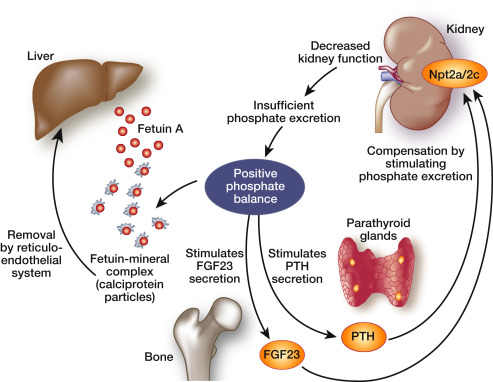Shroff R1, Wan M1, Nagler EV2, Bakkaloglu S3, Fischer DC4, Bishop N5, Cozzolino M6, Bacchetta J7, Edefonti A8, Stefanidis CJ9, Vande Walle J10, Haffner D11, Klaus G12, Schmitt CP13; European Society for Paediatric Nephrology Chronic Kidney Disease Mineral and Bone Disorders and Dialysis Working Groups. Author information
Summary
Vitamin D deficiency is common in children and adults with CKD and is usually acute. Although topical vitamin D (25-hydroxyvitamin D[25(OH)D]} has pleiotropic effects on many organ systems, its skeletal effects have been more widely studied. 25(OH)D deficiency is causally associated with rickets and bone fractures in healthy and CKD children. which leads to mineral and bone disorders. There are some guidelines for vitamin D therapy and its use in CKD. European Society for Pediatric Nephrology has created a set of recommendations for vitamin D evaluation, treatment, and prevention documents include recommendations for active vitamin D therapy. We present our clinical advice on the use of ergocalciferol (Vitamin D2) and cholecalciferol (vitamin D3) for children with stage 2-5 CKD receiving dialysis. Parallel documents include recommendations for active vitamin D therapy. The working group reviewed the extensive literature, including meta-analyses and randomized control trials in healthy children, as well as in children and adults with CKD. In the absence of relevant research data, the opinions of PNAC XBX-MSP and Dialysis working group experts are provided, but should be carefully monitored and evaluated by the treating physician and the appropriate amount prescribed for each patient individually.

